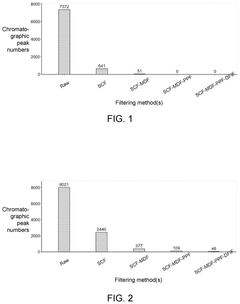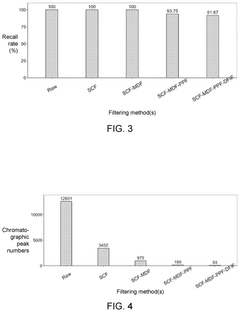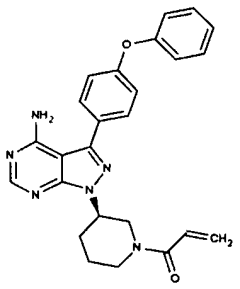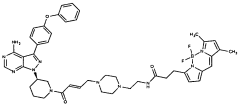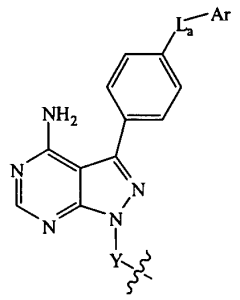Advanced Analytical Tools for Carbonyl Group Study
JUL 24, 202510 MIN READ
Generate Your Research Report Instantly with AI Agent
Patsnap Eureka helps you evaluate technical feasibility & market potential.
Carbonyl Analysis Evolution
The study of carbonyl groups has undergone significant evolution over the past century, driven by advancements in analytical techniques and a growing understanding of their importance in organic chemistry. Initially, carbonyl analysis relied primarily on classical wet chemistry methods, such as derivatization reactions and colorimetric assays. These techniques, while effective, were often time-consuming and lacked the precision required for complex sample analysis.
The introduction of spectroscopic methods in the mid-20th century marked a turning point in carbonyl analysis. Infrared (IR) spectroscopy emerged as a powerful tool for identifying carbonyl groups, with characteristic absorption bands in the 1650-1750 cm^-1 range. This non-destructive technique allowed for rapid identification and quantification of carbonyl compounds in various matrices.
Nuclear Magnetic Resonance (NMR) spectroscopy, particularly 13C NMR, revolutionized carbonyl analysis by providing detailed structural information. The distinct chemical shifts of carbonyl carbons, typically in the 160-220 ppm range, allowed for precise identification of different types of carbonyl compounds and their surrounding chemical environments.
Mass spectrometry (MS) techniques, especially when coupled with chromatographic methods like gas chromatography (GC-MS) and liquid chromatography (LC-MS), further enhanced the analytical capabilities for carbonyl compounds. These hyphenated techniques offered improved sensitivity, selectivity, and the ability to analyze complex mixtures.
The development of advanced derivatization methods, such as the use of 2,4-dinitrophenylhydrazine (DNPH) for aldehydes and ketones, improved the detection limits and specificity of carbonyl analysis. This approach, combined with high-performance liquid chromatography (HPLC), became a standard method for analyzing trace levels of carbonyl compounds in environmental and biological samples.
Recent years have seen the emergence of cutting-edge analytical tools that push the boundaries of carbonyl analysis. High-resolution mass spectrometry, including Fourier transform ion cyclotron resonance (FT-ICR) and Orbitrap technologies, now allows for ultra-high mass accuracy and resolution, enabling the identification of carbonyl compounds in complex matrices with unprecedented precision.
The integration of advanced data processing and machine learning algorithms has further enhanced the capabilities of carbonyl analysis. These computational tools enable the processing of large datasets, automated peak identification, and predictive modeling of carbonyl compound behavior in various chemical and biological systems.
Looking forward, the evolution of carbonyl analysis is likely to continue with the development of miniaturized and portable analytical devices, real-time monitoring systems, and the integration of multi-modal analytical approaches. These advancements will further expand our ability to study carbonyl groups in diverse fields, from environmental monitoring to biomedical research and industrial process control.
The introduction of spectroscopic methods in the mid-20th century marked a turning point in carbonyl analysis. Infrared (IR) spectroscopy emerged as a powerful tool for identifying carbonyl groups, with characteristic absorption bands in the 1650-1750 cm^-1 range. This non-destructive technique allowed for rapid identification and quantification of carbonyl compounds in various matrices.
Nuclear Magnetic Resonance (NMR) spectroscopy, particularly 13C NMR, revolutionized carbonyl analysis by providing detailed structural information. The distinct chemical shifts of carbonyl carbons, typically in the 160-220 ppm range, allowed for precise identification of different types of carbonyl compounds and their surrounding chemical environments.
Mass spectrometry (MS) techniques, especially when coupled with chromatographic methods like gas chromatography (GC-MS) and liquid chromatography (LC-MS), further enhanced the analytical capabilities for carbonyl compounds. These hyphenated techniques offered improved sensitivity, selectivity, and the ability to analyze complex mixtures.
The development of advanced derivatization methods, such as the use of 2,4-dinitrophenylhydrazine (DNPH) for aldehydes and ketones, improved the detection limits and specificity of carbonyl analysis. This approach, combined with high-performance liquid chromatography (HPLC), became a standard method for analyzing trace levels of carbonyl compounds in environmental and biological samples.
Recent years have seen the emergence of cutting-edge analytical tools that push the boundaries of carbonyl analysis. High-resolution mass spectrometry, including Fourier transform ion cyclotron resonance (FT-ICR) and Orbitrap technologies, now allows for ultra-high mass accuracy and resolution, enabling the identification of carbonyl compounds in complex matrices with unprecedented precision.
The integration of advanced data processing and machine learning algorithms has further enhanced the capabilities of carbonyl analysis. These computational tools enable the processing of large datasets, automated peak identification, and predictive modeling of carbonyl compound behavior in various chemical and biological systems.
Looking forward, the evolution of carbonyl analysis is likely to continue with the development of miniaturized and portable analytical devices, real-time monitoring systems, and the integration of multi-modal analytical approaches. These advancements will further expand our ability to study carbonyl groups in diverse fields, from environmental monitoring to biomedical research and industrial process control.
Market Demand for Carbonyl Tools
The market demand for advanced analytical tools in carbonyl group study has been steadily increasing over the past decade. This growth is primarily driven by the expanding applications of carbonyl compounds in various industries, including pharmaceuticals, agrochemicals, and materials science. The pharmaceutical sector, in particular, has shown a significant appetite for these tools due to the crucial role of carbonyl groups in drug discovery and development processes.
Research institutions and academic laboratories have also contributed to the rising demand for sophisticated carbonyl analysis tools. As the complexity of research in organic chemistry and biochemistry continues to grow, there is a pressing need for more precise, efficient, and versatile analytical instruments. This demand is further fueled by the increasing focus on green chemistry and sustainable processes, where accurate analysis of carbonyl compounds plays a vital role in developing environmentally friendly reactions and products.
The global market for analytical instruments used in carbonyl group studies is expected to experience robust growth in the coming years. This growth is attributed to several factors, including technological advancements in spectroscopy and chromatography, increased R&D spending in the life sciences sector, and the growing emphasis on quality control in industrial processes involving carbonyl compounds.
One of the key trends driving market demand is the shift towards multi-functional analytical tools that can perform various types of analyses on carbonyl groups. These integrated systems offer advantages in terms of cost-effectiveness, space efficiency, and improved workflow in research laboratories. Additionally, there is a growing demand for portable and easy-to-use analytical tools, particularly in field applications and point-of-care diagnostics.
The market for carbonyl analysis tools is also being shaped by the increasing adoption of automation and artificial intelligence in analytical processes. This trend is driving the development of smart, high-throughput systems capable of handling large volumes of samples with minimal human intervention. Such advancements are particularly appealing to pharmaceutical companies and contract research organizations looking to accelerate their drug discovery and development pipelines.
Geographically, North America and Europe currently dominate the market for advanced carbonyl analysis tools, owing to their well-established research infrastructure and significant investments in life sciences R&D. However, the Asia-Pacific region is expected to witness the fastest growth in demand, driven by rapid industrialization, increasing research activities, and growing investments in pharmaceutical and biotechnology sectors in countries like China and India.
In conclusion, the market demand for advanced analytical tools in carbonyl group study is robust and diverse, driven by a combination of technological advancements, expanding research activities, and evolving industrial needs. As the importance of carbonyl compounds continues to grow across various sectors, the demand for more sophisticated, efficient, and versatile analytical tools is expected to remain strong in the foreseeable future.
Research institutions and academic laboratories have also contributed to the rising demand for sophisticated carbonyl analysis tools. As the complexity of research in organic chemistry and biochemistry continues to grow, there is a pressing need for more precise, efficient, and versatile analytical instruments. This demand is further fueled by the increasing focus on green chemistry and sustainable processes, where accurate analysis of carbonyl compounds plays a vital role in developing environmentally friendly reactions and products.
The global market for analytical instruments used in carbonyl group studies is expected to experience robust growth in the coming years. This growth is attributed to several factors, including technological advancements in spectroscopy and chromatography, increased R&D spending in the life sciences sector, and the growing emphasis on quality control in industrial processes involving carbonyl compounds.
One of the key trends driving market demand is the shift towards multi-functional analytical tools that can perform various types of analyses on carbonyl groups. These integrated systems offer advantages in terms of cost-effectiveness, space efficiency, and improved workflow in research laboratories. Additionally, there is a growing demand for portable and easy-to-use analytical tools, particularly in field applications and point-of-care diagnostics.
The market for carbonyl analysis tools is also being shaped by the increasing adoption of automation and artificial intelligence in analytical processes. This trend is driving the development of smart, high-throughput systems capable of handling large volumes of samples with minimal human intervention. Such advancements are particularly appealing to pharmaceutical companies and contract research organizations looking to accelerate their drug discovery and development pipelines.
Geographically, North America and Europe currently dominate the market for advanced carbonyl analysis tools, owing to their well-established research infrastructure and significant investments in life sciences R&D. However, the Asia-Pacific region is expected to witness the fastest growth in demand, driven by rapid industrialization, increasing research activities, and growing investments in pharmaceutical and biotechnology sectors in countries like China and India.
In conclusion, the market demand for advanced analytical tools in carbonyl group study is robust and diverse, driven by a combination of technological advancements, expanding research activities, and evolving industrial needs. As the importance of carbonyl compounds continues to grow across various sectors, the demand for more sophisticated, efficient, and versatile analytical tools is expected to remain strong in the foreseeable future.
Current Challenges in Carbonyl Detection
Despite significant advancements in analytical techniques, the detection and characterization of carbonyl groups continue to present several challenges for researchers and industry professionals. One of the primary obstacles is the sensitivity of current methods, particularly when dealing with complex matrices or trace amounts of carbonyl compounds. Many existing techniques struggle to achieve the required detection limits for certain applications, such as environmental monitoring or food safety analysis.
Another significant challenge lies in the selectivity of carbonyl detection methods. Carbonyl groups are present in a wide variety of compounds, including aldehydes, ketones, carboxylic acids, and esters. Distinguishing between these different types of carbonyls, especially in complex mixtures, remains a formidable task. This lack of specificity can lead to false positives or misidentification of compounds, potentially compromising the accuracy of analytical results.
The stability of carbonyl compounds during analysis is also a concern. Many carbonyl-containing molecules are prone to degradation or transformation under certain conditions, such as exposure to light, heat, or specific reagents. This instability can result in underestimation of carbonyl content or the formation of artifacts that complicate data interpretation. Developing methods that maintain sample integrity throughout the analytical process is crucial for obtaining reliable results.
Quantification of carbonyl groups presents another set of challenges. While qualitative detection has improved, accurate and precise quantification, especially at low concentrations, remains difficult. Factors such as matrix effects, interferences from other functional groups, and the dynamic range of analytical instruments can all impact the accuracy of quantitative measurements. Overcoming these limitations is essential for applications requiring precise carbonyl content determination.
Furthermore, the time and cost associated with current carbonyl detection methods are often prohibitive for high-throughput analyses. Many techniques require extensive sample preparation, derivatization steps, or specialized instrumentation, limiting their applicability in routine testing or real-time monitoring scenarios. There is a growing need for rapid, cost-effective, and user-friendly analytical tools that can provide reliable carbonyl detection and quantification without sacrificing performance.
Lastly, the development of non-destructive and in situ carbonyl detection methods remains a significant challenge. Many current techniques require sample extraction or modification, which may not be suitable for certain applications, such as studying carbonyl formation in biological systems or monitoring industrial processes. Advancing non-invasive analytical tools that can provide real-time information on carbonyl content and reactivity would greatly enhance our understanding of carbonyl chemistry in various fields.
Another significant challenge lies in the selectivity of carbonyl detection methods. Carbonyl groups are present in a wide variety of compounds, including aldehydes, ketones, carboxylic acids, and esters. Distinguishing between these different types of carbonyls, especially in complex mixtures, remains a formidable task. This lack of specificity can lead to false positives or misidentification of compounds, potentially compromising the accuracy of analytical results.
The stability of carbonyl compounds during analysis is also a concern. Many carbonyl-containing molecules are prone to degradation or transformation under certain conditions, such as exposure to light, heat, or specific reagents. This instability can result in underestimation of carbonyl content or the formation of artifacts that complicate data interpretation. Developing methods that maintain sample integrity throughout the analytical process is crucial for obtaining reliable results.
Quantification of carbonyl groups presents another set of challenges. While qualitative detection has improved, accurate and precise quantification, especially at low concentrations, remains difficult. Factors such as matrix effects, interferences from other functional groups, and the dynamic range of analytical instruments can all impact the accuracy of quantitative measurements. Overcoming these limitations is essential for applications requiring precise carbonyl content determination.
Furthermore, the time and cost associated with current carbonyl detection methods are often prohibitive for high-throughput analyses. Many techniques require extensive sample preparation, derivatization steps, or specialized instrumentation, limiting their applicability in routine testing or real-time monitoring scenarios. There is a growing need for rapid, cost-effective, and user-friendly analytical tools that can provide reliable carbonyl detection and quantification without sacrificing performance.
Lastly, the development of non-destructive and in situ carbonyl detection methods remains a significant challenge. Many current techniques require sample extraction or modification, which may not be suitable for certain applications, such as studying carbonyl formation in biological systems or monitoring industrial processes. Advancing non-invasive analytical tools that can provide real-time information on carbonyl content and reactivity would greatly enhance our understanding of carbonyl chemistry in various fields.
State-of-the-Art Carbonyl Detection Methods
01 Spectroscopic analysis of carbonyl groups
Various spectroscopic techniques are used to analyze carbonyl groups in compounds. These methods include infrared spectroscopy, Raman spectroscopy, and nuclear magnetic resonance (NMR) spectroscopy. These techniques can provide information about the presence, structure, and environment of carbonyl groups in molecules.- Spectroscopic analysis of carbonyl groups: Various spectroscopic techniques are used to analyze carbonyl groups in compounds. These methods include infrared spectroscopy, Raman spectroscopy, and nuclear magnetic resonance (NMR) spectroscopy. These techniques can provide information about the presence, structure, and environment of carbonyl groups in molecules.
- Chromatographic methods for carbonyl analysis: Chromatographic techniques are employed to separate and analyze carbonyl-containing compounds. High-performance liquid chromatography (HPLC) and gas chromatography (GC) are commonly used methods. These techniques can be coupled with various detectors to identify and quantify carbonyl compounds in complex mixtures.
- Derivatization techniques for carbonyl detection: Chemical derivatization methods are used to enhance the detection and analysis of carbonyl groups. These techniques involve reacting carbonyl compounds with specific reagents to form derivatives that are more easily detected or separated. This approach can improve sensitivity and selectivity in carbonyl analysis.
- Mass spectrometry for carbonyl compound identification: Mass spectrometry is a powerful analytical tool for identifying and characterizing carbonyl compounds. It can provide detailed structural information and is often used in combination with chromatographic techniques. Various ionization methods and mass analyzers can be employed to study carbonyl-containing molecules.
- Computational tools for carbonyl group analysis: Computational methods and software tools are used to analyze and predict properties of carbonyl groups. These include molecular modeling, quantum chemical calculations, and data analysis algorithms. Such tools can assist in interpreting experimental data, predicting spectral properties, and understanding the behavior of carbonyl compounds in various systems.
02 Chromatographic methods for carbonyl analysis
Chromatographic techniques are employed to separate and analyze carbonyl compounds. High-performance liquid chromatography (HPLC) and gas chromatography (GC) are commonly used methods. These techniques can be coupled with various detectors to identify and quantify carbonyl compounds in complex mixtures.Expand Specific Solutions03 Derivatization techniques for carbonyl detection
Chemical derivatization methods are used to enhance the detection and analysis of carbonyl compounds. These techniques involve reacting carbonyl groups with specific reagents to form derivatives that are more easily detected or separated. This approach can improve sensitivity and selectivity in carbonyl analysis.Expand Specific Solutions04 Mass spectrometry for carbonyl compound identification
Mass spectrometry is a powerful analytical tool for identifying and characterizing carbonyl compounds. It can provide detailed structural information and is often used in combination with chromatographic techniques. Various ionization methods and mass analyzers can be employed to study carbonyl groups in different types of samples.Expand Specific Solutions05 Computational tools for carbonyl group analysis
Computational methods and software tools are developed to assist in the analysis of carbonyl groups. These include molecular modeling, structure prediction algorithms, and data analysis software. Such tools can help interpret spectroscopic data, predict chemical properties, and aid in the identification of unknown carbonyl compounds.Expand Specific Solutions
Key Players in Analytical Chemistry
The field of advanced analytical tools for carbonyl group study is in a mature stage of development, with a diverse competitive landscape. The market size is substantial, driven by the pharmaceutical and chemical industries' demand for precise molecular analysis. Technological maturity is high, with established players like Eisai R&D Management, Takeda Pharmaceutical, and Janssen Pharmaceutica leading in innovation. Universities such as Nagoya University and The University of Nottingham contribute significantly to research advancements. Emerging trends include the integration of AI and machine learning in analytical processes, with companies like BASF and Toyota Motor Corp exploring cross-industry applications. The competitive edge lies in developing more sensitive, high-throughput tools that can provide real-time analysis of complex carbonyl compounds.
China Petroleum & Chemical Corp.
Technical Solution: Sinopec has developed a suite of analytical tools specifically tailored for carbonyl group study in petrochemical processes. Their approach combines advanced mass spectrometry techniques, including high-resolution Orbitrap MS and ion mobility MS, to characterize carbonyl compounds in complex matrices[7]. They have also implemented a novel derivatization method coupled with GC-MS for trace-level carbonyl analysis in fuels and lubricants[9]. Additionally, Sinopec has developed an AI-powered spectral interpretation system that can automatically identify and quantify carbonyl compounds from multiple analytical inputs[11].
Strengths: Highly specialized tools for petrochemical applications, advanced MS techniques, and AI-assisted data interpretation. Weaknesses: Tools may be less versatile for non-petrochemical carbonyl analysis.
President & Fellows of Harvard College
Technical Solution: Harvard researchers have developed cutting-edge analytical tools for carbonyl group study, focusing on biomedical and environmental applications. Their approach includes the use of ultrafast 2D IR spectroscopy to study carbonyl dynamics in proteins and enzymes[8]. They have also pioneered the use of nanoparticle-enhanced Raman spectroscopy for single-molecule detection of carbonyl compounds in biological samples[10]. Furthermore, Harvard has developed a microfluidic platform coupled with fluorescence microscopy for high-throughput screening of carbonyl-targeting drugs[12].
Strengths: Highly sensitive and versatile techniques applicable to various fields, from biochemistry to drug discovery. Weaknesses: Some techniques require sophisticated and expensive equipment, limiting widespread adoption.
Innovative Carbonyl Group Probes
Method of identifying tobacco carbonyl components using non-targeted mass spectrometry
PatentActiveUS12131893B1
Innovation
- A method involving derivatization reactions with 2,4-dinitrophenylhydrazine, followed by multi-dimensional data filtering using statistical characteristics, chromatographic behavior, mass spectrometry characteristics, and isotope labeling information to enhance the detection and identification of aldehyde and ketone components in complex LC-MS data sets.
Bruton's tyrosine kinase activity probe and method of using
PatentWO2008054827A2
Innovation
- Development of Btk activity probes comprising an irreversible inhibitor, a linker moiety, and a reporter moiety that form covalent or non-covalent bonds with cysteine residues on Btk, allowing for the measurement of Btk activity and the assessment of inhibitor efficacy and pharmacodynamics.
Environmental Impact of Carbonyl Analysis
The environmental impact of carbonyl analysis is a critical consideration in the development and application of advanced analytical tools for carbonyl group study. These tools, while essential for scientific research and industrial processes, can have significant implications for the environment.
One of the primary environmental concerns associated with carbonyl analysis is the use of hazardous chemicals and solvents. Many traditional methods for detecting and quantifying carbonyl compounds involve the use of toxic reagents, such as 2,4-dinitrophenylhydrazine (DNPH). These chemicals can pose risks to aquatic ecosystems and human health if not properly managed and disposed of. As a result, there is a growing emphasis on developing greener analytical techniques that minimize the use of harmful substances.
The energy consumption of analytical instruments is another important factor to consider. High-performance liquid chromatography (HPLC) and gas chromatography (GC) systems, commonly used in carbonyl analysis, require significant amounts of electricity to operate. This energy demand contributes to greenhouse gas emissions and resource depletion, particularly if the power source is not from renewable energy.
Sample preparation and extraction processes can also have environmental implications. These steps often involve the use of organic solvents, which can contribute to air pollution and ozone depletion if released into the atmosphere. Additionally, the disposal of used solvents and reagents can lead to soil and water contamination if not handled properly.
However, advancements in analytical technologies are addressing these environmental concerns. The development of solvent-free extraction methods, such as solid-phase microextraction (SPME), has reduced the reliance on organic solvents. Similarly, the introduction of more sensitive detectors has allowed for smaller sample sizes, thereby reducing waste generation and chemical consumption.
The shift towards miniaturization in analytical instrumentation is also contributing to reduced environmental impact. Microfluidic devices and lab-on-a-chip technologies not only decrease reagent consumption but also minimize waste production. These compact systems often require less energy to operate, further reducing their carbon footprint.
Furthermore, the application of carbonyl analysis tools in environmental monitoring and pollution control paradoxically contributes to positive environmental outcomes. These tools enable the detection and quantification of harmful carbonyl compounds in air, water, and soil, facilitating more effective environmental protection measures and pollution mitigation strategies.
In conclusion, while carbonyl analysis tools have historically posed certain environmental challenges, ongoing research and technological advancements are continuously improving their sustainability profile. The development of greener analytical methods, coupled with more efficient and miniaturized instrumentation, is paving the way for more environmentally friendly carbonyl analysis practices in the future.
One of the primary environmental concerns associated with carbonyl analysis is the use of hazardous chemicals and solvents. Many traditional methods for detecting and quantifying carbonyl compounds involve the use of toxic reagents, such as 2,4-dinitrophenylhydrazine (DNPH). These chemicals can pose risks to aquatic ecosystems and human health if not properly managed and disposed of. As a result, there is a growing emphasis on developing greener analytical techniques that minimize the use of harmful substances.
The energy consumption of analytical instruments is another important factor to consider. High-performance liquid chromatography (HPLC) and gas chromatography (GC) systems, commonly used in carbonyl analysis, require significant amounts of electricity to operate. This energy demand contributes to greenhouse gas emissions and resource depletion, particularly if the power source is not from renewable energy.
Sample preparation and extraction processes can also have environmental implications. These steps often involve the use of organic solvents, which can contribute to air pollution and ozone depletion if released into the atmosphere. Additionally, the disposal of used solvents and reagents can lead to soil and water contamination if not handled properly.
However, advancements in analytical technologies are addressing these environmental concerns. The development of solvent-free extraction methods, such as solid-phase microextraction (SPME), has reduced the reliance on organic solvents. Similarly, the introduction of more sensitive detectors has allowed for smaller sample sizes, thereby reducing waste generation and chemical consumption.
The shift towards miniaturization in analytical instrumentation is also contributing to reduced environmental impact. Microfluidic devices and lab-on-a-chip technologies not only decrease reagent consumption but also minimize waste production. These compact systems often require less energy to operate, further reducing their carbon footprint.
Furthermore, the application of carbonyl analysis tools in environmental monitoring and pollution control paradoxically contributes to positive environmental outcomes. These tools enable the detection and quantification of harmful carbonyl compounds in air, water, and soil, facilitating more effective environmental protection measures and pollution mitigation strategies.
In conclusion, while carbonyl analysis tools have historically posed certain environmental challenges, ongoing research and technological advancements are continuously improving their sustainability profile. The development of greener analytical methods, coupled with more efficient and miniaturized instrumentation, is paving the way for more environmentally friendly carbonyl analysis practices in the future.
Carbonyl Data Management and Analysis
Effective carbonyl data management and analysis are crucial for advancing the study of carbonyl groups. Modern analytical tools have revolutionized the way researchers collect, store, and interpret data related to these important functional groups. Database systems specifically designed for carbonyl compounds have been developed, allowing for efficient storage and retrieval of vast amounts of spectroscopic, structural, and reactivity data.
These specialized databases often incorporate advanced search algorithms that enable researchers to quickly locate relevant information based on various parameters such as molecular structure, spectral features, or reaction conditions. Machine learning techniques have been integrated into these systems, enhancing their ability to predict properties and behaviors of carbonyl compounds based on existing data sets.
Data visualization tools have become increasingly sophisticated, offering researchers the ability to generate interactive 3D models of carbonyl-containing molecules and their electron density distributions. These visual representations aid in understanding complex molecular interactions and reaction mechanisms involving carbonyl groups.
Spectral analysis software has evolved to provide automated peak assignment and structure elucidation capabilities for carbonyl compounds. These tools can rapidly process and interpret data from various spectroscopic techniques, including NMR, IR, and mass spectrometry, significantly reducing the time required for structural characterization.
High-throughput screening platforms have been developed to analyze large libraries of carbonyl compounds, enabling rapid assessment of their reactivity and potential applications. These systems often incorporate robotics and automated data processing to efficiently handle vast numbers of samples and generate comprehensive datasets.
Cloud-based platforms for carbonyl data analysis have gained popularity, allowing for collaborative research and real-time data sharing among scientists worldwide. These platforms often include powerful computational tools for molecular modeling and quantum chemical calculations, which are essential for predicting and understanding carbonyl group behavior.
Artificial intelligence and machine learning algorithms are being increasingly applied to carbonyl data analysis, offering new insights into structure-property relationships and reaction prediction. These advanced analytical tools can identify patterns and trends in large datasets that may not be apparent through traditional analysis methods.
As the field of carbonyl chemistry continues to advance, the integration of these analytical tools with emerging technologies such as quantum computing and blockchain is expected to further enhance data management and analysis capabilities, opening new avenues for discovery and innovation in carbonyl group research.
These specialized databases often incorporate advanced search algorithms that enable researchers to quickly locate relevant information based on various parameters such as molecular structure, spectral features, or reaction conditions. Machine learning techniques have been integrated into these systems, enhancing their ability to predict properties and behaviors of carbonyl compounds based on existing data sets.
Data visualization tools have become increasingly sophisticated, offering researchers the ability to generate interactive 3D models of carbonyl-containing molecules and their electron density distributions. These visual representations aid in understanding complex molecular interactions and reaction mechanisms involving carbonyl groups.
Spectral analysis software has evolved to provide automated peak assignment and structure elucidation capabilities for carbonyl compounds. These tools can rapidly process and interpret data from various spectroscopic techniques, including NMR, IR, and mass spectrometry, significantly reducing the time required for structural characterization.
High-throughput screening platforms have been developed to analyze large libraries of carbonyl compounds, enabling rapid assessment of their reactivity and potential applications. These systems often incorporate robotics and automated data processing to efficiently handle vast numbers of samples and generate comprehensive datasets.
Cloud-based platforms for carbonyl data analysis have gained popularity, allowing for collaborative research and real-time data sharing among scientists worldwide. These platforms often include powerful computational tools for molecular modeling and quantum chemical calculations, which are essential for predicting and understanding carbonyl group behavior.
Artificial intelligence and machine learning algorithms are being increasingly applied to carbonyl data analysis, offering new insights into structure-property relationships and reaction prediction. These advanced analytical tools can identify patterns and trends in large datasets that may not be apparent through traditional analysis methods.
As the field of carbonyl chemistry continues to advance, the integration of these analytical tools with emerging technologies such as quantum computing and blockchain is expected to further enhance data management and analysis capabilities, opening new avenues for discovery and innovation in carbonyl group research.
Unlock deeper insights with Patsnap Eureka Quick Research — get a full tech report to explore trends and direct your research. Try now!
Generate Your Research Report Instantly with AI Agent
Supercharge your innovation with Patsnap Eureka AI Agent Platform!
